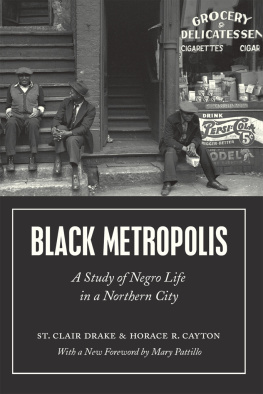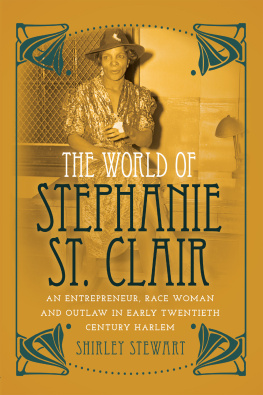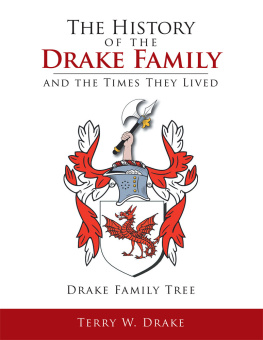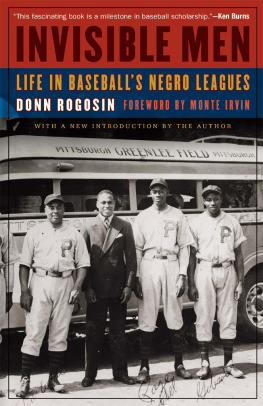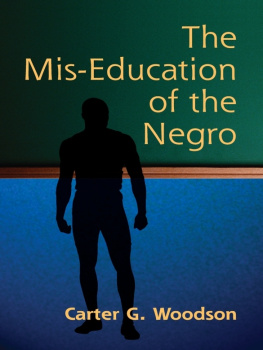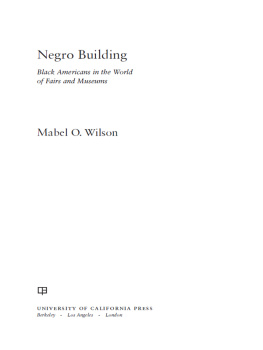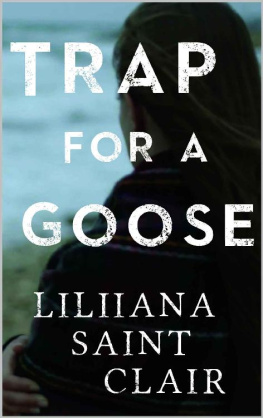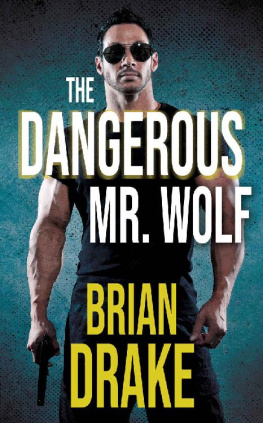St. Clair Drake - Black Metropolis : A Study of Negro Life in a Northern City
Here you can read online St. Clair Drake - Black Metropolis : A Study of Negro Life in a Northern City full text of the book (entire story) in english for free. Download pdf and epub, get meaning, cover and reviews about this ebook. year: 1970, publisher: University of Chicago Press, genre: Politics. Description of the work, (preface) as well as reviews are available. Best literature library LitArk.com created for fans of good reading and offers a wide selection of genres:
Romance novel
Science fiction
Adventure
Detective
Science
History
Home and family
Prose
Art
Politics
Computer
Non-fiction
Religion
Business
Children
Humor
Choose a favorite category and find really read worthwhile books. Enjoy immersion in the world of imagination, feel the emotions of the characters or learn something new for yourself, make an fascinating discovery.
- Book:Black Metropolis : A Study of Negro Life in a Northern City
- Author:
- Publisher:University of Chicago Press
- Genre:
- Year:1970
- Rating:5 / 5
- Favourites:Add to favourites
- Your mark:
- 100
- 1
- 2
- 3
- 4
- 5
Black Metropolis : A Study of Negro Life in a Northern City: summary, description and annotation
We offer to read an annotation, description, summary or preface (depends on what the author of the book "Black Metropolis : A Study of Negro Life in a Northern City" wrote himself). If you haven't found the necessary information about the book — write in the comments, we will try to find it.
Black Metropolis : A Study of Negro Life in a Northern City — read online for free the complete book (whole text) full work
Below is the text of the book, divided by pages. System saving the place of the last page read, allows you to conveniently read the book "Black Metropolis : A Study of Negro Life in a Northern City" online for free, without having to search again every time where you left off. Put a bookmark, and you can go to the page where you finished reading at any time.
Font size:
Interval:
Bookmark:
Publishers Note to the 2015 Edition
The 2015 edition of Black Metropolis omits materials published in the earlier editions, including the introduction to the 1962 edition by Everett C. Hughes, the authors preface to the 1962 edition, and the 1993 foreword by William Julius Wilson. These materials can be found online at the University of Chicago Press website.
ST. CLAIR DRAKE AND HORACE R. CAYTON
BLACK METROPOLIS
A STUDY OF NEGRO LIFE IN A NORTHERN CITY
With a Foreword by Mary Pattillo
The University of Chicago Press
Chicago and London
John Gibbs St. Clair Drake (191190) was a sociologist and anthropologist who founded African American Studies programs at Roosevelt University and Stanford University. His books included Social Work in West Africa, Race Relations in a Time of Rapid Social Change, and Black Religion and the Redemption of Africa.
Horace R. Cayton (190370) was a sociologist known for his studies of working-class black Americans, particularly in mid-twentieth-century Chicago. His books included Black Works and the New Unions and Long Old RoadAn Autobiography.
The University of Chicago Press, Chicago 60637
The University of Chicago Press, Ltd., London
1945, 1962, 1970 by St. Clair Drake and Horace R. Cayton
Foreword 2015 by The University of Chicago
All rights reserved. Published 2015.
Printed in the United States of America
24 23 22 21 20 19 18 17 16 151 2 3 4 5
ISBN-13: 978-0-226-25321-3 (paper)
ISBN-13: 978-0-226-25335-0 (e-book)
DOI: 10.7208/chicago/9780226253350.001.0001
Library of Congress Cataloging-in-Publication Data
Drake, St. Clair, author.
Black metropolis : a study of Negro life in a northern city / St. Clair Drake and Horace R. Cayton; with a foreword by Mary Pattillo.
pages cm
Includes bibliographical references and index.
ISBN 978-0-226-25321-3 (pbk. : alk. paper) ISBN 978-0-226-25335-0 (e-book)
1. African AmericansIllinoisChicagoSocial conditions. 2. African AmericansIllinoisChicagoEconomic conditions. 3. Chicago (Ill.)Social conditions. 4. Chicago (Ill.)Economic conditions. I. Cayton, Horace R. (Horace Roscoe), 19031970, author. II. Title.
F548.9.N4D73 2015
305.896'073077311dc23
2014041597
The lines of poetry quoted on are from Chicago from Chicago Poems by Carl Sandburg. Copyright 1916 by Holt, Rinehart & Winston, Inc. Copyright 1944 Carl Sandburg.
Reprinted by permission of Holt, Rinehart & Winston, Inc.
Published by special arrangement with Houghton Mifflin Harcourt Publishing Company.
 This paper meets the requirements of ANSI/NISO Z39.481992
This paper meets the requirements of ANSI/NISO Z39.481992
(Permanence of Paper).
Dedicated to
THE LATE PROFESSOR ROBERT E. PARK
of Tuskegee, the University of Chicago, and Fisk;
AMERICAN SCHOLAR AND FRIEND OF THE NEGRO PEOPLE;
who once said:
Anthropology, the science of man, has been mainly concerned up to the present with the study of primitive peoples. But civilized man is quite as interesting an object of investigation, and at the same time his life is more open to observation and study. Urban life and culture are more varied, subtle and complicated, but the fundamental motives are in both instances the same.
by Mary Pattillo
by Richard Wright
by W. Lloyd Warner
In the Appendix:
Blackness
stretches over the land.
Blackness
the Black of it,
the rust-red of it,
the milk and cream of it,
the tan and yellow-tan of it,
the deep-brown middle-brown high-brown of it,
the olive and ochre of it
Blackness
marches on.
Primer for Blacks, by Gwendolyn Brooks (1980)
GWENDOLYN BROOKS (19172000), POET LAUREATE OF CHICAGO, WROTE THE poem Primer for Blacks in 1980, and it still applies. Stand at the corner of 63rd and Racine, 79th and Yates, Pulaski and Roosevelt Road, 119th and Halsted, or Lake and Laramie in Chicago and youll see where Blackness stretches over the land. Go to the Chicago suburbs of Dolton, Harvey, or Maywood and youll see where Blackness marches on. The City of Chicago is home to the second largest black population in the US, behind New York City. Black Chicago continues to nurture artistic creativity, economic innovation, and political imagination. It has moments of fierce solidarity, festive celebration, petty squabbling, and destructive combat across its many social strata, neighborhoods, religious traditions, gang territories, and partisan ideologies. Black Metropolis persists in the twenty-first century.
St. Clair Drake and Horace Cayton captured the dynamic life of Black Metropolis with inimitable detail and scope. They focused on the period of the 1930s and 1940s and in later editions added information about the 1950s and 1960s. Bringing their voluminous research up to date is an impossible task. Hence the modest goal of this foreword is to address three questions: What and where is Black Metropolis in the early twenty-first century? What does life look like in Black Metropolis today? And what is its future? Since these questions do not have right or wrong answers, this foreword is an invitation to engage more fully with Drake and Caytons original arguments in Black Metropolis. Their methods and discoveries have impressive staying power and leave an extraordinary legacy; hence returning to the original study provides the analytical tools for looking at todays Black Metropolises.
Black Metropolis is the product of the New Deals Works Progress Administration (WPA), the University of Chicagos interests in cities and black communities as sites for research, and the vision and toil of Horace Cayton and St. Clair Drake. The money for Black Metropolis came primarily from the federal government, which aimed to put people to work during the Great Depression. As Cayton reported, It was not too difficult to secure such funds at the time, since millions were being spent to provide jobs for the unemployed. The procedure was for some responsible organization or institution to suggest a project; workers and limited supplies were then furnished by the government (Cayton as quoted in Dolinar 2013, xviii). The University of Chicago was the responsible organization, and it was there that Horace Cayton and W. Lloyd Warnera white professor in the anthropology and sociology departmentsbegan discussing their shared interests in racial stratification.
In 1936, Horace Cayton was returning to the University of Chicago as a graduate student after having spent a short time teaching at the historically black Fisk University in Tennessee. Cayton was quite familiar with both the university and Chicago, having worked as a research assistant on projects on police, politics, and unions in the black community for professors Robert Park, Louis Wirth, and Harold Gosnell in the early 1930s. Because of Caytons experience and interests, Warner appointed him to oversee a study that would gather information about black life in the urban north. Their question was generally formulated as To what degree is the Negro subordinated and excluded in relation to white ). This work was organized into what became known as the Cayton-Warner Project, a collection of over twenty different studies on housing, churches, newspapers, employment, crime, and the many other topics that are represented in Black Metropolis. Cayton managed the interracial team of some two-hundred people, composed of graduate students, interviewers, office staff, data analysts, cartographers, and other such workers.
Next pageFont size:
Interval:
Bookmark:
Similar books «Black Metropolis : A Study of Negro Life in a Northern City»
Look at similar books to Black Metropolis : A Study of Negro Life in a Northern City. We have selected literature similar in name and meaning in the hope of providing readers with more options to find new, interesting, not yet read works.
Discussion, reviews of the book Black Metropolis : A Study of Negro Life in a Northern City and just readers' own opinions. Leave your comments, write what you think about the work, its meaning or the main characters. Specify what exactly you liked and what you didn't like, and why you think so.

